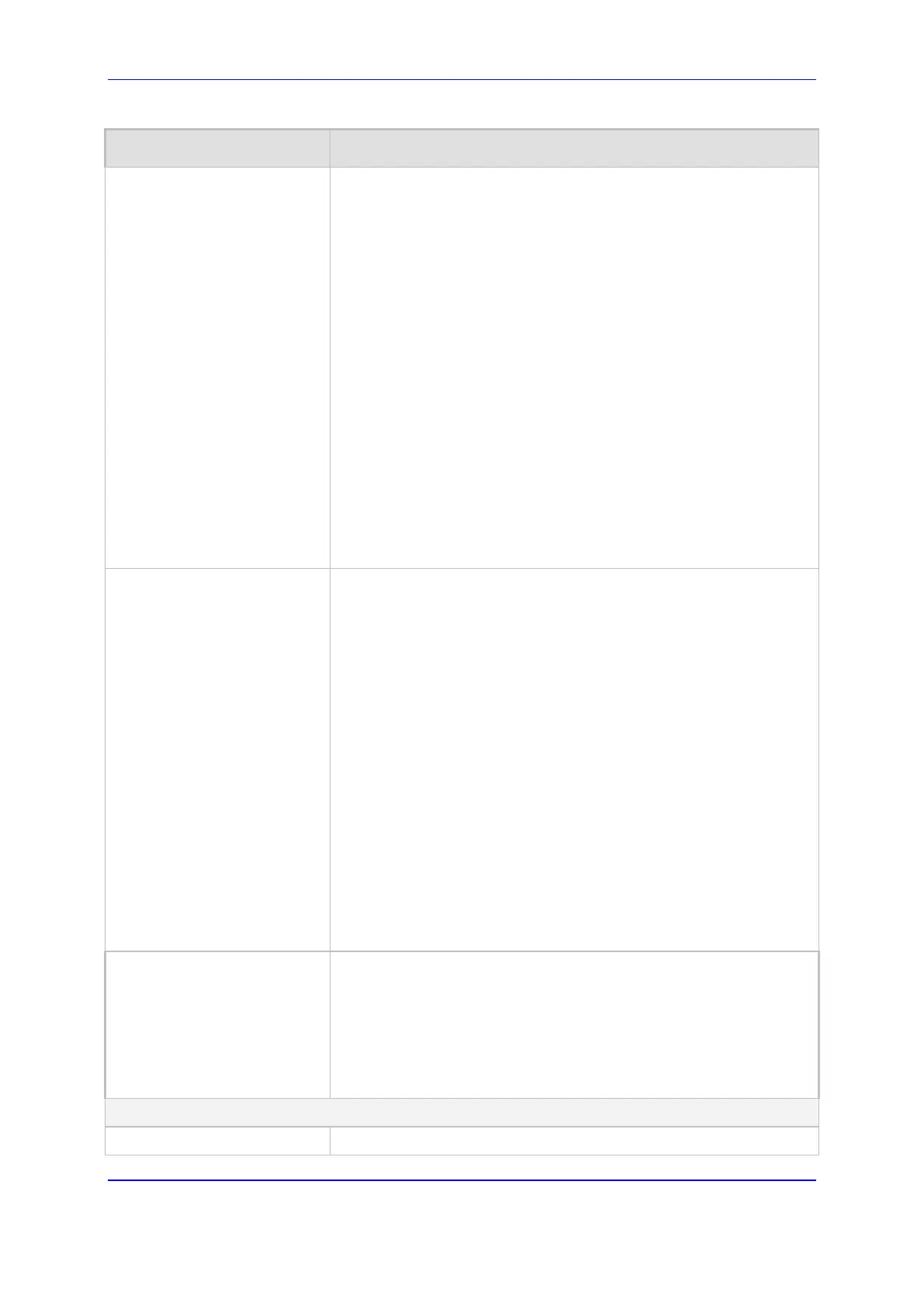Version 7.2 423 Mediant 1000B Gateway & E-SBC
User's Manual 19. Coders and Profiles
Parameter Description
QSIG Tunneling
enable-qsig-tunneling
[IpProfile_EnableQSIGTunneli
ng]
Enables QSIG tunneling-over-SIP for this SIP entity. This is
according to IETF Internet-Draft draft-elwell-sipping-qsig-tunnel-03
and ECMA-355 and ETSI TS 102 345.
[0] Disable (default).
[1] Enable = Enables QSIG tunneling from QSIG to SIP, and vice
versa. All QSIG messages are sent as raw data in corresponding
SIP messages using a dedicated message body.
Note:
The parameter is applicable only to digital interfaces.
QSIG tunneling must be enabled on originating and terminating
devices.
To enable this function, set the ISDNDuplicateQ931BuffMode
parameter to 128 (i.e., duplicate all messages).
To define the format of encapsulated QSIG messages, use the
QSIGTunnelingMode parameter.
Tunneling according to ECMA-355 is applicable to all ISDN
variants (in addition to the QSIG protocol).
For more information on QSIG tunneling, see QSIG Tunneling on
page 457.
The corresponding global parameter is EnableQSIGTunneling.
Copy Destination Number to
Redirect Number
copy-dst-to-redirect-number
[IpProfile_CopyDest2Redirect
Number]
Enables the device to copy the called number, received in the SIP
INVITE message, to the redirect number in the outgoing Q.931
Setup message, for IP-to-Tel calls. Thus, even if there is no SIP
Diversion or History header in the incoming INVITE message, the
outgoing Q.931 Setup message will contain a redirect number.
[0] Disable (default).
[1] After Manipulation = Copies the called number after
manipulation. The device first performs IP-to-Tel destination
phone number manipulation, and only then copies the
manipulated called number to the redirect number sent in the
Q.931 Setup message to the Tel. Thus, the called and redirect
numbers are the same.
[2] Before Manipulation = Copies the called number before
manipulation. The device first copies the original called number to
the SIP Diversion header, and then performs IP-to-Tel destination
phone number manipulation. Thus, the called (i.e., SIP To
header) and redirect (i.e., SIP Diversion header) numbers are
different.
Note: The corresponding global parameter is
CopyDest2RedirectNumber.
Number of Calls Limit
call-limit
[IpProfile_CallLimit]
Defines the maximum number of concurrent calls (incoming and
outgoing) for the SIP entity associated with the IP Profile. If the
number of concurrent calls reaches this limit, the device rejects any
new incoming and outgoing calls belonging to this IP Profile.
The parameter can also be set to the following:
[-1] = (Default) No limitation on calls.
[0] = All calls are rejected.
Gateway DTMF
Is DTMF Used Enables DTMF signaling.

